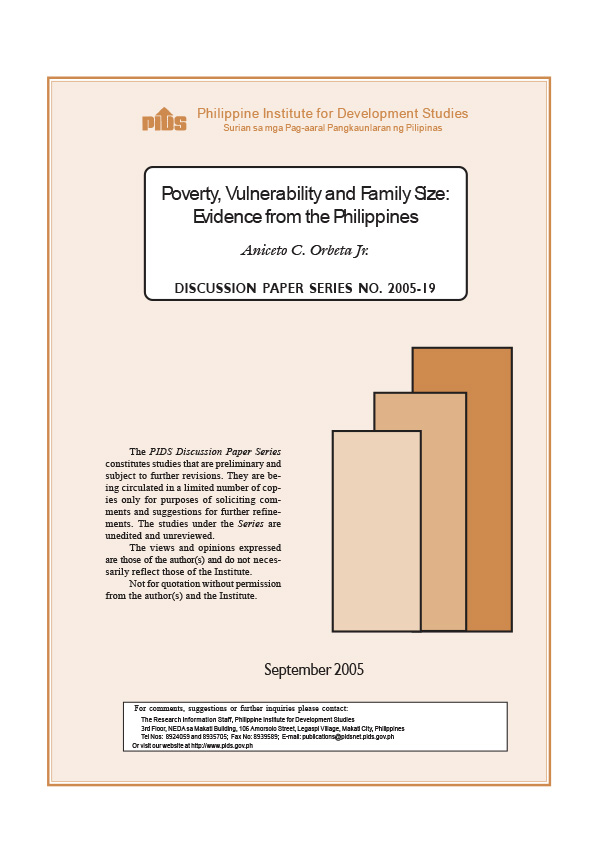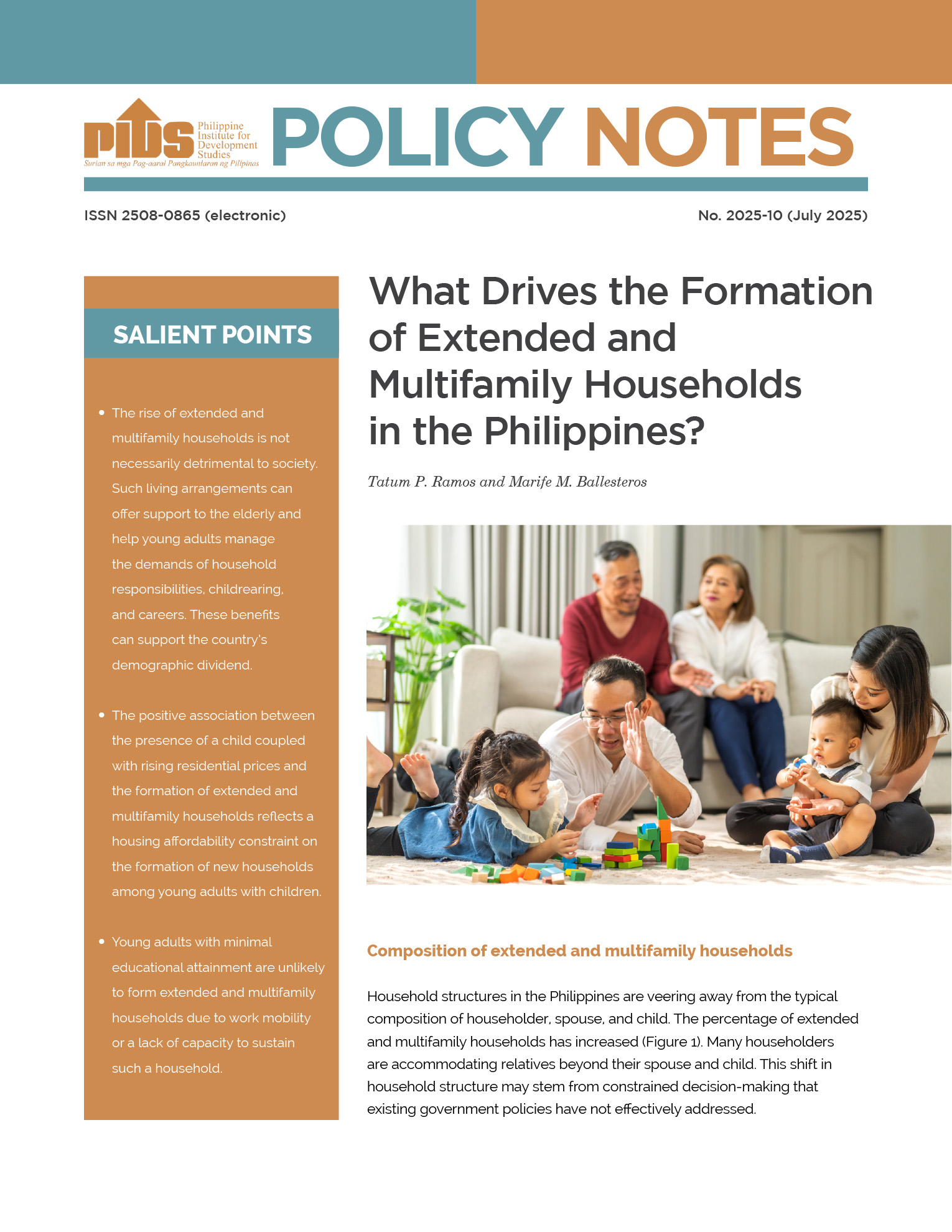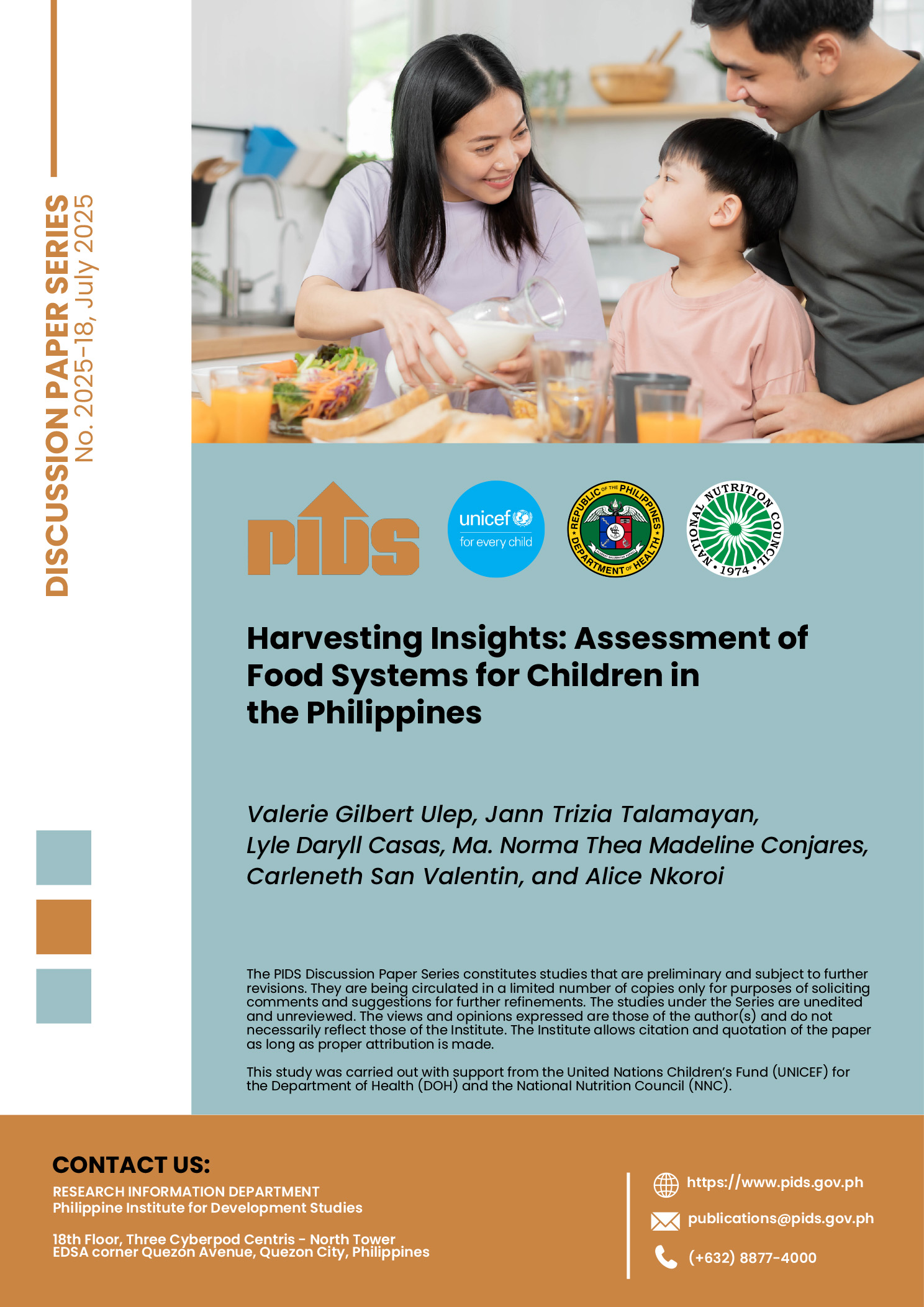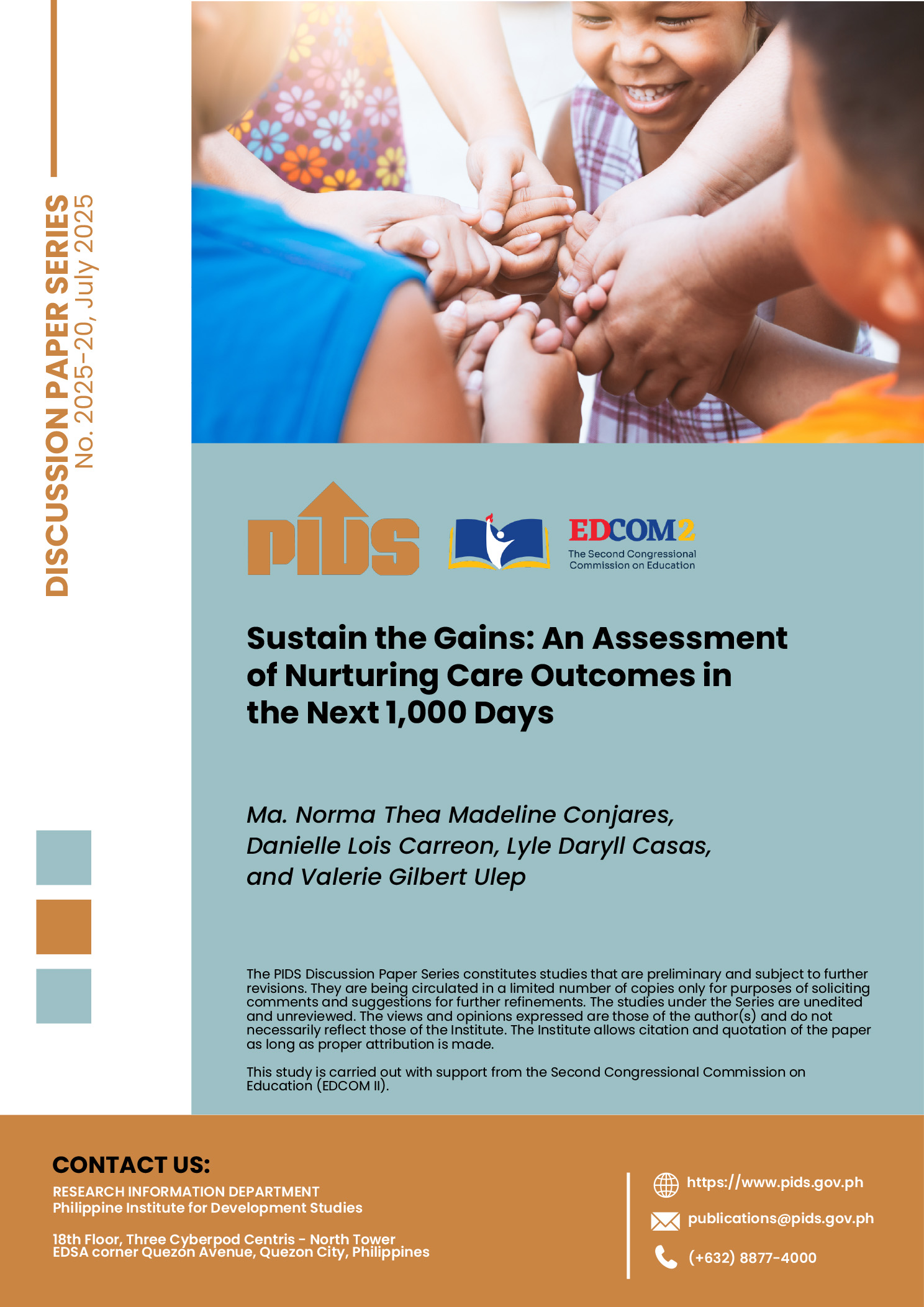This paper shows how large family size can be an important contributor to household poverty. It presents results from recent research by the author using nationally representative household survey data that demonstrate clearly how large family size can contribute to poverty and vulnerability through its impact on household savings, labor supply, and parental earnings and education of children. The paper is the most systematic attempt to date to show the links between family size and poverty in the Philippines using household survey data. The clear implication of the results is that, in the case of the Philippines, an active population policy aimed at restricting family size could have an important impact on poverty reduction.
Citations
This publication has been cited 20 times
- Akonor, Nana Ohene and Adriana A. E. Biney. 2021. Ethnicity and fertility desires in Ghana. Journal of Population Research, 38, No. 3, 283-306 . Springer.
- Arif, G. M. and Faiz Bilquees. 2006. Chronic and transitory poverty in Pakistan: Evidence from a longitudinal household survey. MIMAP Technical Paper Series 2006:19. Pakistan Institute of Development Economics.
- Arif, G. M. and Faiz Bilquees. 2007. Chronic and transitory poverty in Pakistan: Evidence from a longitudinal household survey. The Pakistan Development Review, 46, no. 2, 111-127. Pakistan Institute of Development Economics.
- Arif, G. M. and Shujaat Farooq. 2012. Rural poverty dynamics in Pakistan: Evidence from three waves of the panel survey. Poverty and Social Dynamics Paper Series 2012:02. Pakistan Institute of Development Economics.
- Arif, G. M. and Shujaat Farooq. 2014. Rural poverty dynamics in Pakistan: Evidence from three waves of the panel survey. The Pakistan Development Review, 53, no. 2, 71-98. Pakistan Institute of Development Economics.
- Barrios, Erniel B. and Christian D. Mina. 2013. Profiling poverty with multivariate adaptive regression splines. Philippine Journal of Development PJD 2010, 37, no. 2d. Philippine Institute for Development Studies.
- Barrios, Erniel B. and Christian D. Mina. 2009. Profiling poverty with multivariate adaptive regression splines. Discussion Papers DP 2009-29. Philippine Institute for Development Studies.
- Bayudan-Dacuycuy, Connie and Joseph Anthony Lim. 2013. Family size, household shocks and chronic and transient poverty in the Philippines. Journal of Asian Economics, 29(C), 101-112. Elsevier.
- Bayudan-Dacuycuy, Connie and Joseph Anthony Lim. 2013. Family size, household shocks and chronic and transient poverty in the Philippine households. MPRA Paper 64739. University Library of Munich, Germany.
- Chakravorty, Swastika and Srinivas Goli. 2021. Family structure, economic outcomes and perceived change in economic well-being in India. OSF Preprints 23kvs. Center for Open Science.
- Darsono, Susilo Nur Aji Cokro and Mongkon Donkwa. 2016. Factors analysis of household poverty in rural area of west Kalimantan, Indonesia. Advances in Management and Applied Economics, 6, no. 6, 1-2 . SCIENPRESS Ltd..
- Orbeta, Aniceto C. Jr.. 2006. Children and household savings in the Philippines. Development Economics Working Papers 22672. East Asian Bureau of Economic Research.
- Orbeta, Aniceto Jr.. 2006. Children and household savings in the Philippines. Discussion Papers DP 2006-14. Philippine Institute for Development Studies.
- Orbeta, Aniceto Jr.. 2007. Impact of children on household savings in the Philippines. Philippine Journal of Development PJD, 32, no. 2. Philippine Institute for Development Studies.
- Orbeta, Aniceto Jr. C.. 2007. Poverty, fertility preferences and family planning practice in the Philippines. Philippine Journal of Development PJD, 33. Philippine Institute for Development Studies.
- Orbeta, Aniceto Jr. C.. 2005. Poverty, fertility preferences and family planning practice in the Philippines. Development Economics Working Papers 22668. East Asian Bureau of Economic Research.
- Orbeta, Aniceto Jr. C.. 2005. Poverty, fertility preferences and family planning practice in the Philippines. Discussion Papers DP 2005-22. Philippine Institute for Development Studies.
- Racelis, Rachel H. and J.M Ian S. Salas. 2007. Measuring economic lifecycle and flows across population age groups: Data and methods in the application of the NTA in the Philippines. Development Economics Working Papers 22682. East Asian Bureau of Economic Research.
- Salas, J.M. Ian S. and Rachel H. Racelis. 2007. Measuring economic lifecycle and flows across population age groups: Data and methods in the application of the NTA in the Philippines. Discussion Papers DP 2007-12. Philippine Institute for Development Studies.
- World Bank. 2012. Liberia poverty note: Tracking the dimensions of poverty. World Bank Publications - Reports 12320. The World Bank Group.













